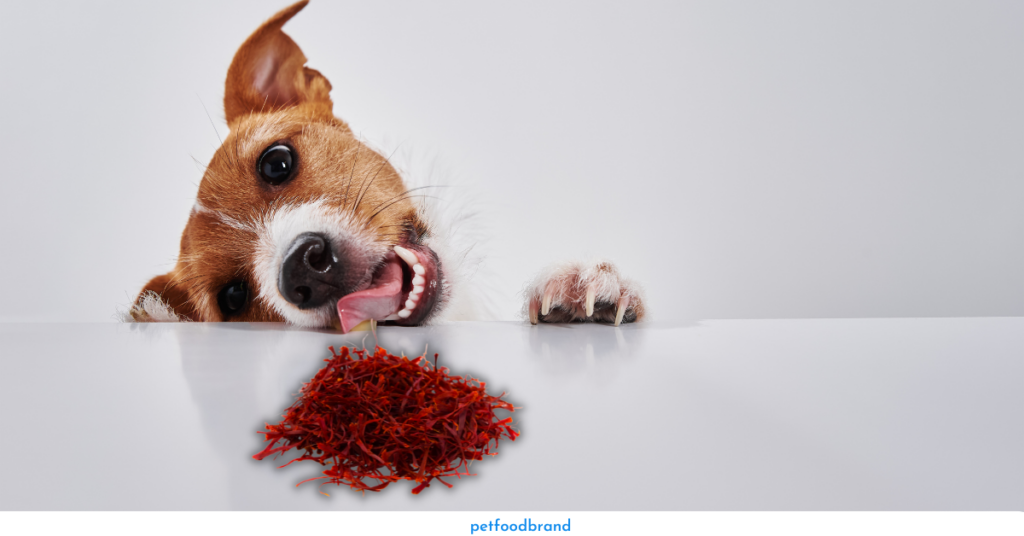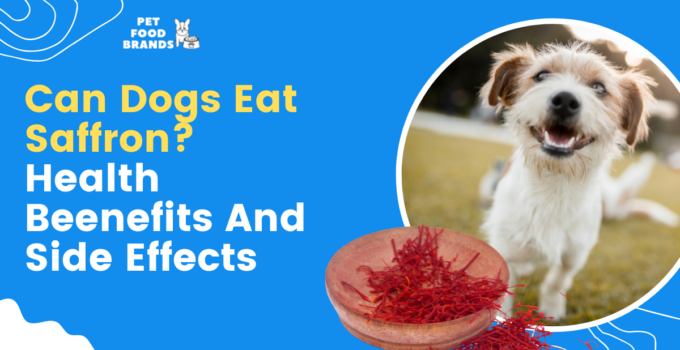Saffron is a bright-yellow, aromatic spice derived from the dried stigmas of the saffron crocus. It has a strong, bitter taste and a characteristic fragrance.
The saffron plant is used for many different purposes, including its golden-yellow color and flavor. Its most common culinary uses are as a dye for rice, paella, risotto, paella rice, couscous, yellow rice, and other dishes that utilize yellow color.
Can dogs eat Saffron?

Yes, dogs can eat Saffron. There is no reason for dogs to avoid eating Saffron as it is low in toxicity, and there is no reason for them to be allergic to it. However, since it is a spice, it can affect the digestive system of your pup.
Foods containing very high Saffron levels may cause some dogs to experience gastrointestinal distress such as vomiting and diarrhea.
Yellow Saffron
Yellow Saffron is a type of Saffron that is processed to make it light in color. It is often used to make yellow foods, such as yellow cakes and bread.
Yellow Saffron is safe for dogs and puppies. However, we recommend limiting the amount your dog eats if your dog has a sensitive stomach, we recommend limiting Saffron to one pinch per day.
Saffron rice
Saffron rice is a type of rice that has been infused with the stigma of Saffron. The stigma is the part of the plant that is used to produce the spice.
There is no reason why dogs cannot eat saffron rice, but Saffron’s flavor is quite strong and might not be attractive to some dogs.
Can I feed couscous to my dog?
Health benefits of Saffron
A few health benefits of Saffron are listed below:
- It is used as a dietary supplement for digestive health, cardiac health, and lower cholesterol.
- It has been used as a treatment for cancer and to help those who have allergies.
- Saffron may help those who have depression by reducing blood pressure and increasing activity in the areas of the brain that fight depression.
- Saffron may help those who have schizophrenia as it has been found to
- Saffron can be taken in capsule form or used in tea.
Side effects of feeding Saffron to your dog
The following are general side effects of feeding Saffron to your dog. For a more detailed list, please get in touch with your veterinarian.
- Nausea
- Vomiting
- Diarrhea
- Loss of appetite
- Anorexia
- Thirst
- Constipation
- Loss of appetite
- Anorexia
FAQs
How much is Saffron bad for dogs?
Many dogs will tolerate Saffron in small quantities, but some dogs may react to the spice in larger quantities by vomiting or having diarrhea.
What to do if an allergic dog eats Saffron?
If your dog has an allergic reaction to Saffron, contact your veterinarian. Your vet will be able to provide you with a detailed list of what to do and what not to do to help your dog recover.
What is meadow saffron?
It is a plant member of the legume family, and it is a relative of the common Saffron. It grows as a perennial plant and bears a yellow flower. Meadow Saffron is native to Eurasia and North America.
Is meadow saffron poisonous to dogs?
No, Meadow saffron is not poisonous to dogs. However, it should not be more than 1 gram of dried flowers per 10 pounds of body weight.
How much you give your dog is not so important as how much your dog can handle. If you have a small dog, a teaspoon of meadow saffron would be safe. If you have a large dog, a teaspoon would probably be too much.
If you have a small dog, a teaspoon of meadow saffron can help your pet gain weight and support health.

Ankita is a passionate pet lover and head of content at Pet Food Brands. With her extensive knowledge and research, she provides pet owners with top-quality information on dog food and nutrition. Her dedication to improving the lives of dogs makes her a leading voice in the industry.




